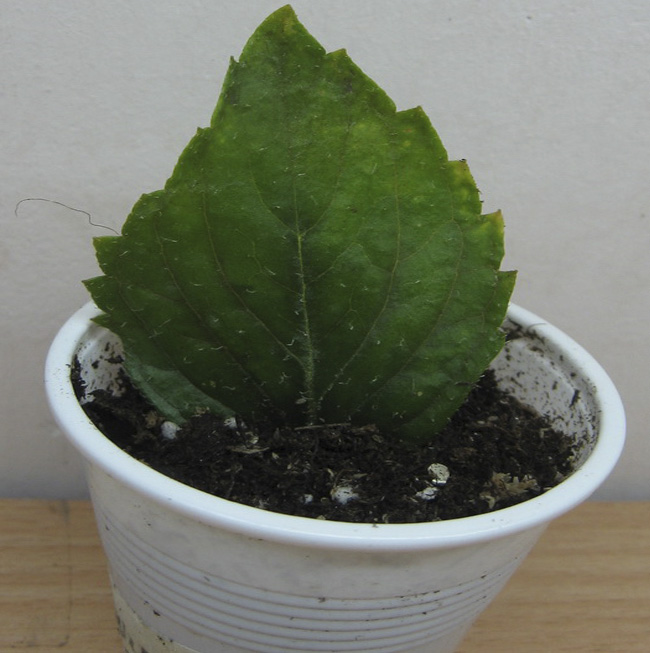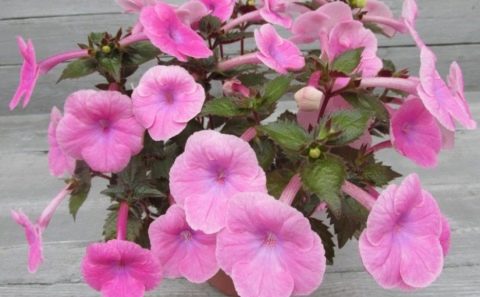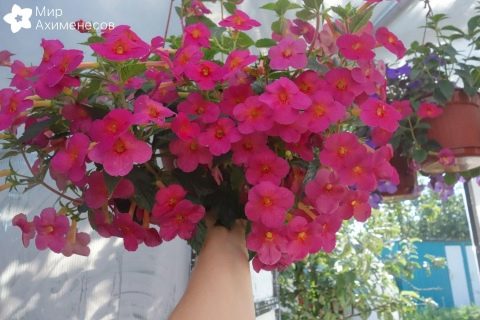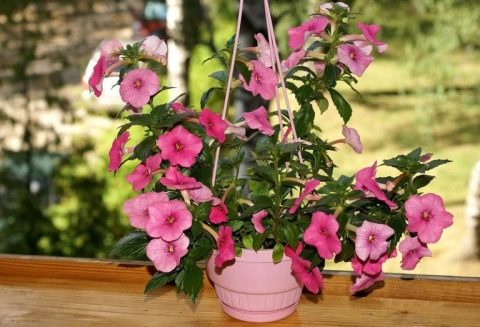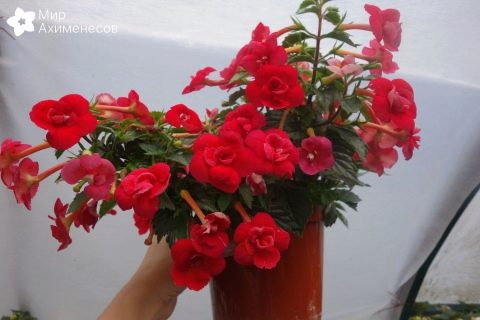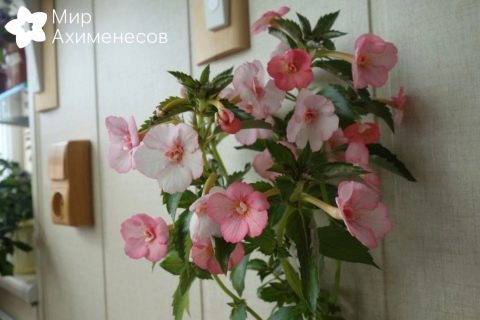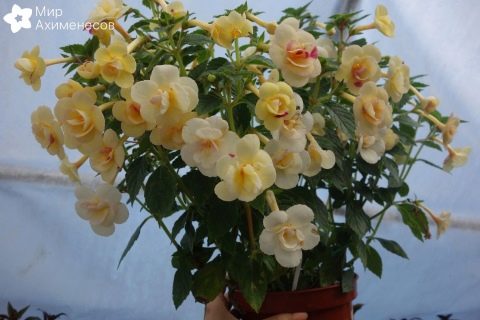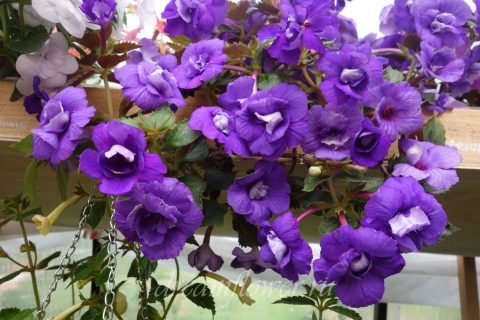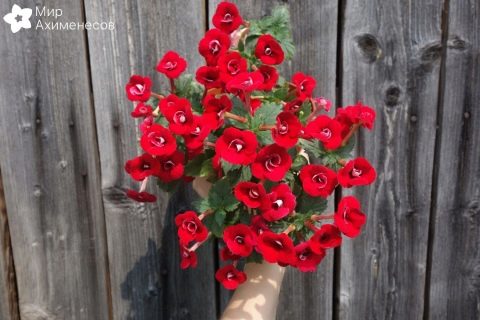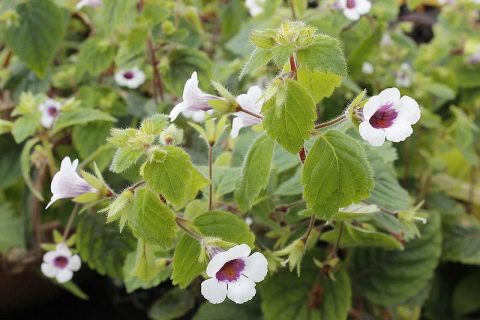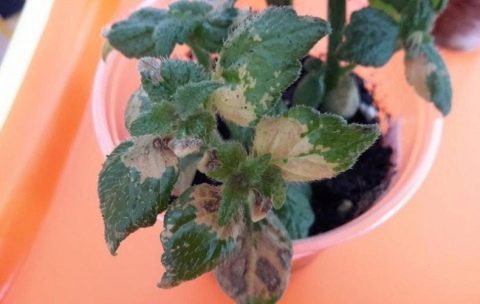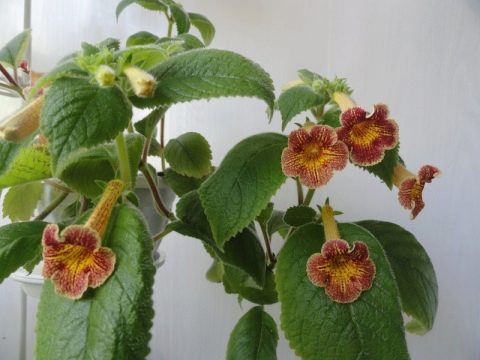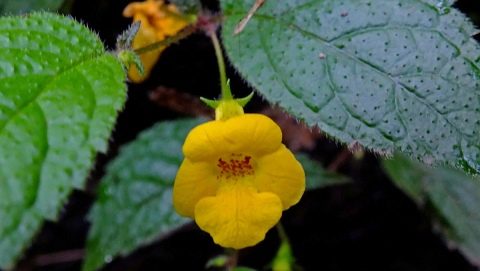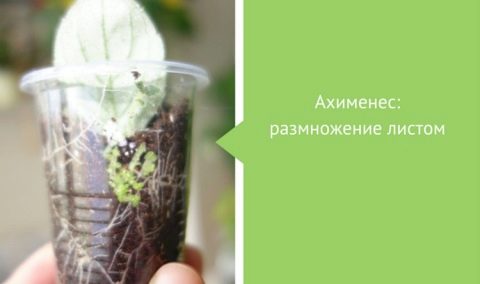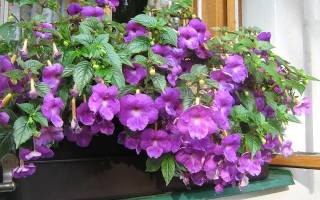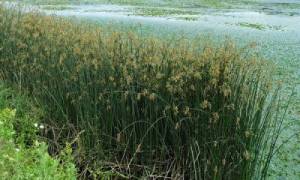Table: seasonal conditions for growing Ahmenes
| Spring Summer | Autumn winter | |
| Lighting | It grows well in a bright place, protected from direct sunlight. The plant can be placed on a window facing West or East, as well as a loggia or balcony. | A dark place is required during the dormant period. |
| Temperature | The temperature is moderate (20-25ºC), the plant prefers to grow outdoors in summer, so it is best to take the achimenes out to a balcony or loggia. | A suitable temperature for keeping achimenes in winter is 16-18ºC. |
| Humidity | The flower needs high humidity (85–90%). Achimenes needs to be sprayed regularly, but make sure that no water droplets fall on leaves and flowers. Spray water from a spray bottle around the plant. Put sphagnum moss in a tray and moisten it periodically. Another way to create humid conditions is to put an indoor fountain on a shelf or window sill next to a flower. | Moisturizing is not required in winter. |
Secrets of planting and transplanting at home
Planting scaly rhizomes (rhizomes) of achimenes is best from mid-February to early March. The planting mixture must be moisture and breathable. When making up the soil mixture, take peat, humus, sand, add perlite or vermiculite. You can also use any ready-made substrate with a slightly acidic or neutral reaction, for example, for violets.
Choose a wide and shallow container, since the root system of Achimenes is small. Experienced flower growers recommend planting only one rhizome in a 7 cm diameter bowl, if a 10 cm diameter pot, then no more than three pieces can be planted, and five to six erect varieties in a 15 cm diameter container. Rhizomes of ampelous Achimenes can be planted thicker.
Transplant features - step by step instructions
-
Shake out the top of the old soil from the achimenes container. Select all rhizomes carefully. Examine them. Healthy rhizomes must be elastic on to the touch, dense, reddish pink. Throw away any darkened, dry or moldy ones without regret. Healthy planting material will provide abundant flowering.
Healthy rhizomes should be firm to the touch, dense, reddish-pink in color.
- Divide large rhizomes into several parts by cutting them with a clean knife. Remove weak shoots.
-
Make good drainage. Pour small pebbles or expanded clay on the bottom of the container in a layer of 1.5 cm for aeration with rhizome of achimenes.
When planting, pour a layer of drainage into the pot, this is necessary to aerate the rhizome of achimenes
- Fill a pot 3/5 full with soil and moisten the substrate well with warm water.
-
Spread the rhizomes on a moistened soil at a distance of two centimeters from each other, sprinkle on top with a layer of earth 1.5–2 cm thick.
Lay the rhizomes horizontally
- Cover the plantings with plastic wrap, a transparent plastic lid or glass and put an impromptu greenhouse in a dark place.
- Do not water anymore before germination, but be sure to ventilate twice a day, preferably in the morning and evening. Wipe off the condensation formed on the greenhouse cover. At the initial stage of growth, after a period of rest, the Ahimenes need water only as a stimulant for germination, while the seedlings use the moisture and nutrients stored in the rhizomes in the fall. They can germinate even without additional moistening of the soil in a container with planted rhizomes.
- After about two to three weeks, the first shoots should appear. As soon as this happened, move the container with the Ahimenes to a sunny place with diffused light. Achimenes does not need direct sunlight, but bright diffused light is very necessary for the formation of a compact bush and its abundant flowering.
-
Moisten the soil sparingly, do not allow water to stagnate in the container with plantings, otherwise the rhizomes will begin to rot and you will not be able to save the plant. Please note that all dormant rhizomes in excessively moist soil can rot.
Seedling care is the same as for adult plants
Feeding schedule
It is imperative to feed the Achimenes once a week. You can use any fertilizer, as well as alternate them. Fertilizers should be diluted strictly according to the instructions, it is even better to make the solution a little weaker in order to avoid burns.
You need to feed the previously watered plants. If the soil is dry, you first need to water it with clean water and when the plant gets drunk, only then feed it.
At the initial stage, you need to grow a good root system - I water it a couple of times with Raikat Start fertilizer or any phosphorus fertilizer. The composition is always indicated on the package, we look at the ratio - there should be the most phosphorus.
Then we help to build up the vegetative mass - any fertilizers with a predominance of nitrogen, for example, urea, will do.
When the bush is already well formed, the green mass is sufficiently increased, we switch to potash (for flowering) - for example, potassium monophosphate, potassium nitrate, Raikat Final.
If we are lazy to breed fertilizers or forget, we can use long-acting fertilizers, for example, Osmokot (0.5 teaspoon per 1 liter of soil). Yes, it is expensive, but just one application is enough.
Propagation of a houseplant achimenes by cuttings
The achimenes flower, which is propagated by cuttings, also takes root well. To do this, you need to carry out the following manipulations:
- choose a good, healthy stem;
- cut it off at the base;
- remove all buds from it (they may prevent the cuttings from taking root);
- remove the lower leaves, if the stalk is long enough, then it can be divided into two identical parts, 2-3 pairs of formed leaves are enough for rooting;
- prepare loose soil;
- fix the cuttings in the soil, water;
- create a greenhouse effect with a can or polyethylene.
Further, the planting material should be ventilated from time to time and provided with diffused lighting. The rooting of achimenes during propagation by cuttings is observed after 14 days, in some cases the process can take up to 4 weeks.
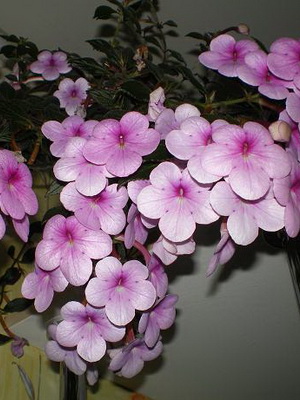
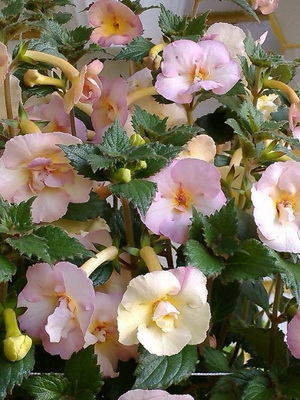
If we talk about the achimenes flower, then when caring for it, reproduction is also carried out, for example, when a plant is transplanted. In this case, a part of the rhizome is used as a planting material, which is separated along with bores and rhizomes. It is better to do this in the spring. The finished material is planted in a new pot.
Indoor plant achimenes and its flowering
With successful care, the houseplant achimenes blooms for a long period - from spring (April-May) to autumn (September-October). Such a long bloom of Achimenenses requires regular application of mineral fertilizers.
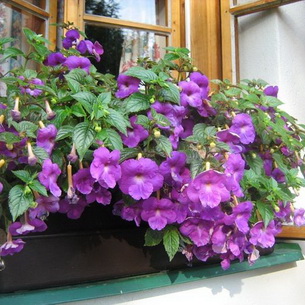
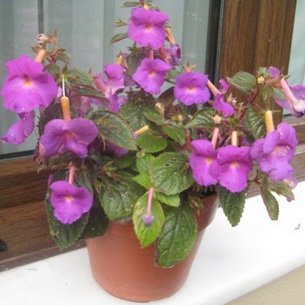
Its long-tubular flowers - "bells" are located in the axils of the leaves (one or several pieces) on pedicels of different lengths. They are usually large (up to 5–6 cm in diameter), funnel-shaped, ending in five bent petals; the central, largest petal stands out from the rest. It is this flower shape with a graceful and large bent fifth petal that differs achimenes among indoor gloxinia, which is sometimes called its relative. The rounded five-lobed corolla of achimenes can be of different colors - white, blue, yellow, pink, red, purple and violet.Each flower individually does not live long, but new ones immediately grow to replace it, therefore the entire flowering period of the plant is so long.
Achimenes care
Ahimenez is not at all difficult to care for. Follow these simple rules and he will delight you with his beauty every day.
Lighting
The plant prefers bright, but diffused light. Shading is required from direct sunlight, especially if it is on a south window, where the bright sun can cause burns on the leaves.
Temperature
Favorable temperature for achimenes is 22-24 degrees. He is thermophilic, at 20 degrees he is already cold. Therefore, if you want to grow it in flowerpots on the street or on an open balcony, remember that when it gets colder it must be brought inside the room.
Watering
During the period of active growth and a set of buds, the plant needs regular moderate watering. Ahimenez will not stand both drought, the buds wither from it, and overflow, from which decay of the roots can begin. Look for a middle ground.
Spraying will also be unnecessary, the flower does not like it, it leaves spots on the leaves. But high humidity is necessary for this tropical plant, so we recommend humidifying the air in the room or placing the pot in a tray with wet expanded clay.
Top dressing
Actively growing achimenes needs regular feeding once every one to two weeks. Use complex fertilizers for indoor plants
Pay special attention to fertilizers with nitrogen content, which are beneficial to growth.
Dormant period
Ahimenes is a flower with a pronounced dormant period. After vigorous flowering, the ground part of the plant dries up. While this process continues, the plant prepares for hibernation by forming rhizomes.
During this period, watering is reduced and feeding stops. The stems are not cut until they dry out so that they can transfer all the nutrients to the root.
Features of flowering plants
A distinctive feature of the flower, because of which it fell in love with many growers, is the duration of flowering, which is observed throughout the growing season, and the ease of cultivation.
A period of activity and rest
Throughout the annual cycle, Ahimenes goes through several stages of development, which is why care and cultivation will differ at different times of the year. In total, there are 2 periods of the existence of the achimenes juaregia flower.
Activity period
Achimenes blooms for a long time, at home it can bloom twice between May and October. The first flowers usually appear in late spring or early summer. At this time, the plant blooms profusely and brightly. The second phase of flowering occurs in autumn and is less pronounced. Withered flowers are torn off to stimulate the growth of new buds.
Dormant period
Ahimenes has a pronounced dormant period, which begins towards the end of October. After all the flowers have fallen, the plant dries up little by little, and the roots are filled with juices, preparing for winter. During sleep, the flower should receive proper care, which consists of limited watering, low lighting and maintaining the temperature within 16-18 ℃ above zero.
It is important that the plant does not wake up ahead of time. If this nevertheless happened, then the pot is moved to a more illuminated place or open ground.
The flowering of achimenes will be as plentiful and long-lasting as possible in the presence of timely pinching of the tops of young shoots. The procedure is performed when the length of the seedlings does not exceed 2.5 cm.
Types and varieties of indoor flower achimenes: photo, name and description
Each type of achimenes is unique. Many of them are similar in their characteristics to each other. But the Achimenes of hybrid varieties, the description of which we will provide below, are unique.
The best varieties include:
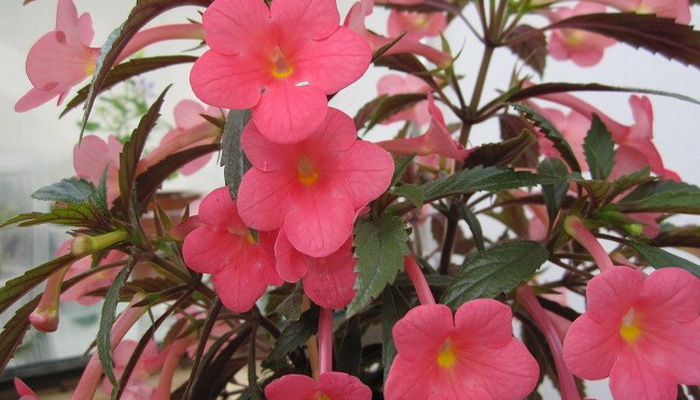
"Little Beauty" - with numerous bright pink flowers
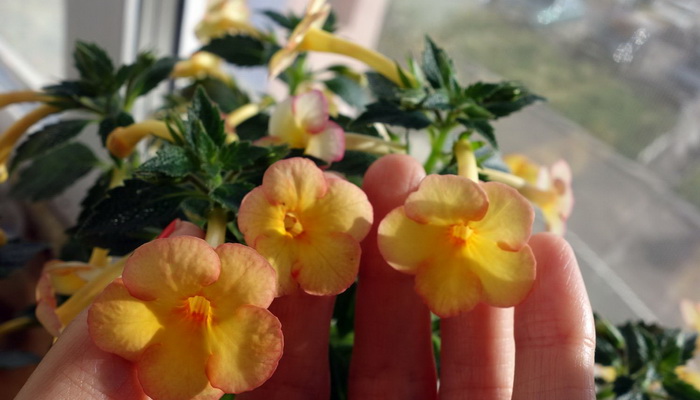
"Claudid Yellow"
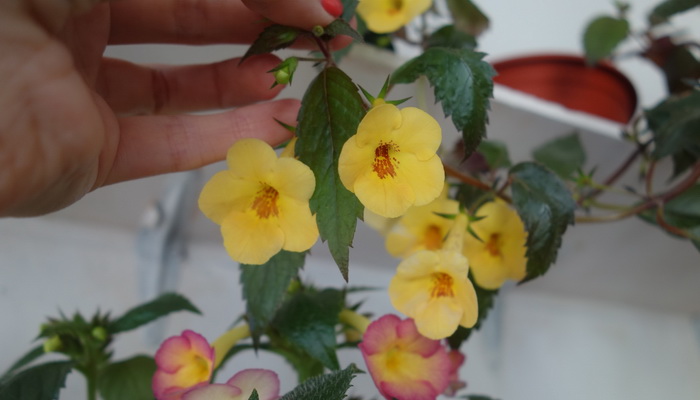
"Cameo Triumph" is a variety with yellow flowers.
Next, we will acquaint you with other types and varieties of Achimenes, show their photos and provide a description of each of them.
Long-flowered. This is a kind of ampelous plant. Its branches reach 30 cm, so it can be classified as a medium-sized type. Achimenes leaves are light green in color, slightly drooping down. It blooms with single flowers. Their color is white. Close to the core of the tubular inflorescence, pale purple or yellowish stripes are formed. A spreading limb is formed at the end of the flower tube. Underground pineal root, white or slightly pink in color.
Look below at Achimenes longiflorum - its varieties with names are shown in the photo:
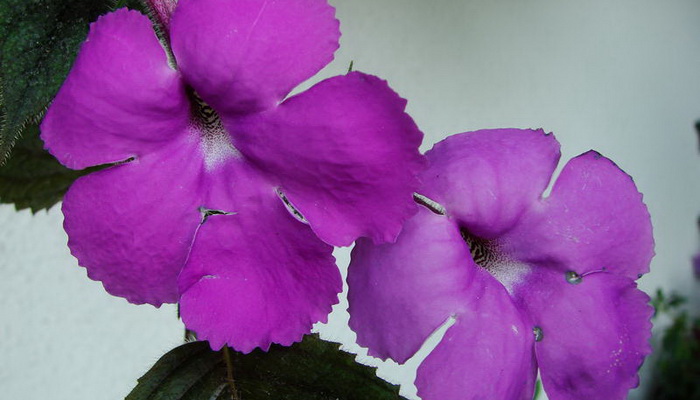
"Major" - it is believed that it produces the largest flowers, which can reach 8 cm in diameter

"Chiapas" - large plants with light purple flowers, wavy at the edges
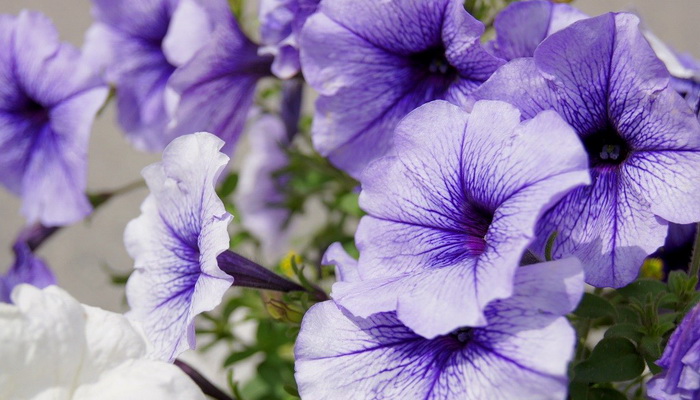
"Haage" - differs in large flowers with a purple throat
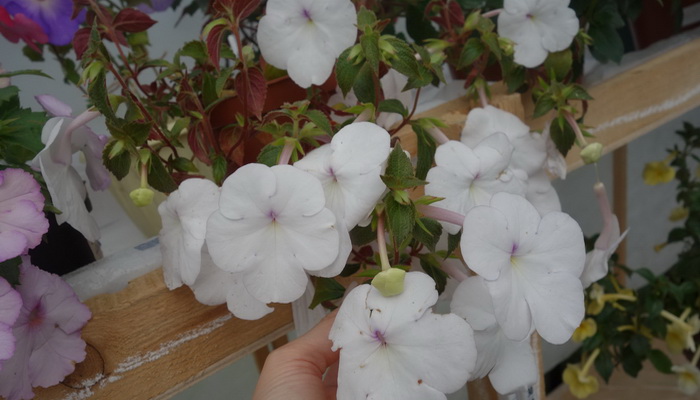
"Juaregia" - ampelous plant with a large color up to 6 cm in diameter
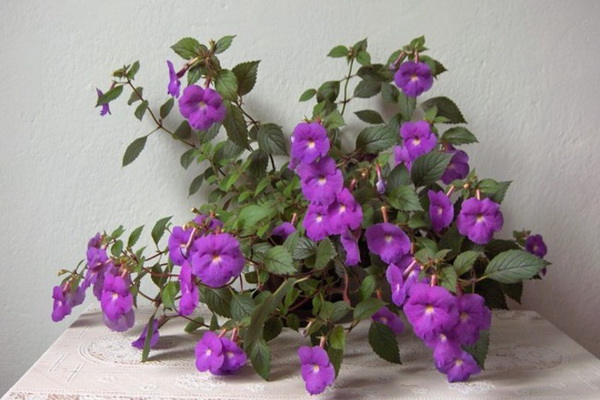
Large-flowered. This is one of the largest Achimenes. The variety called Grandiflora reaches a height of up to 60 cm. The flowers are also quite large - up to 7 cm in diameter, and the length of the leaf reaches 10 cm. The shoots are drooping, spreading. The leaf is dark green in color, may have a reddish tint around the edges. Red flowers are located along the shoot. Although, depending on the variety, they can be white, blue or pink. And some plants have bronze-colored foliage. There are such varieties:
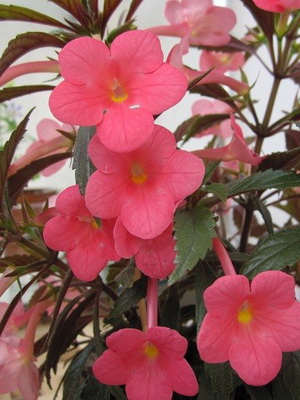
"Little Beauty"

"Yellow Beauty"
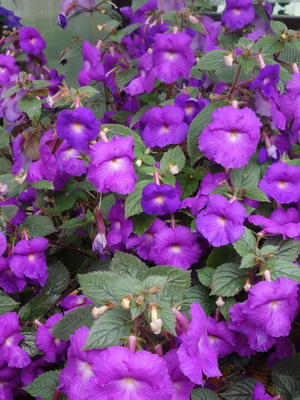
"Purple King"
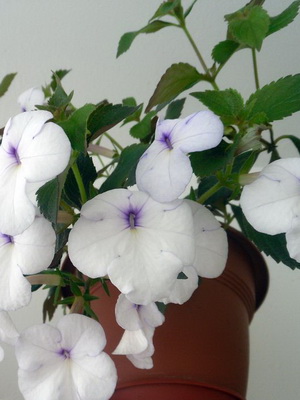
"Snow Queen"
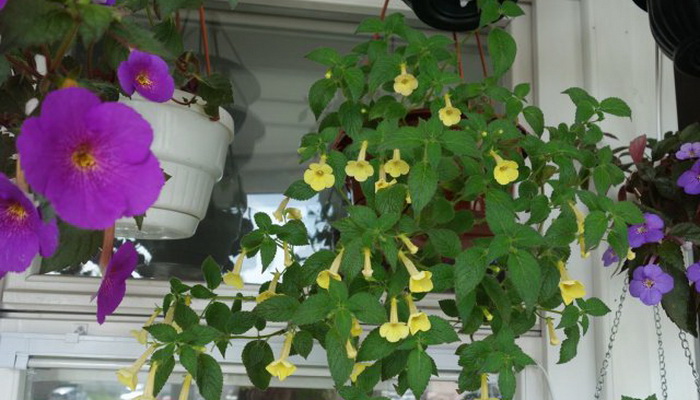
Clouded Yellow.
Sweet. The achimenes flower, photo and description of which you can see below, belongs to the medium-sized species, and its color has a slightly perceptible aroma.
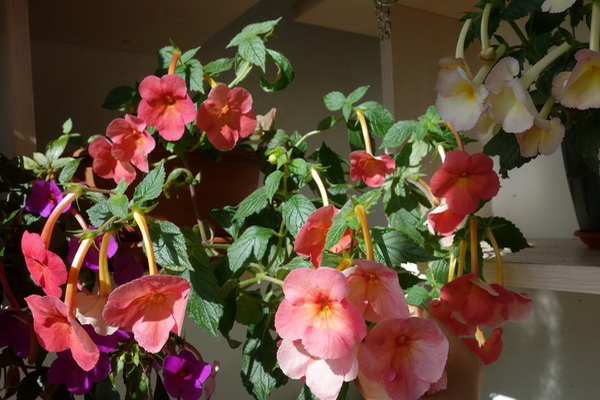
Erect shoots have a lot of light green leaves. The throat of the flowers is deep, in the depths the snow-white bell turns into a yellowish core. The diameter of the flower is no more than 4 cm.
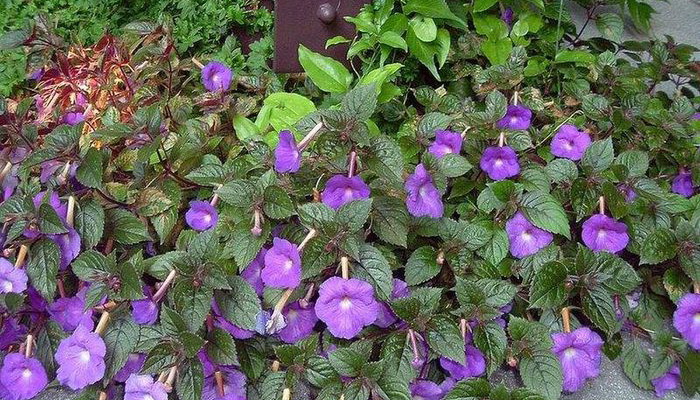
Mexican. In its external characteristics, it is similar to gloxinia.
Straight shoots with bright green leaves down. Flowers are arranged in a corolla, have a violet-blue color. The height under favorable conditions of this type of achimenes reaches 50 cm.
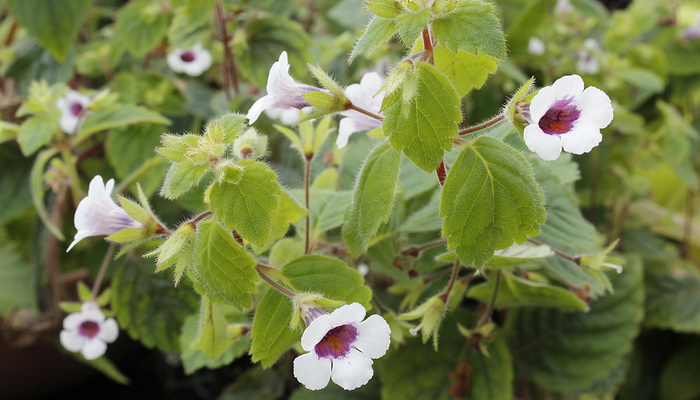
Miser. The characteristic of this achimenes has its own distinctive features.
It gives a fairly small color (no more than 1 cm in diameter). A large purple spot is observed in the middle of the pharynx. The foliage of the plant is of a dark green hue; it is evenly distributed on erect stems.
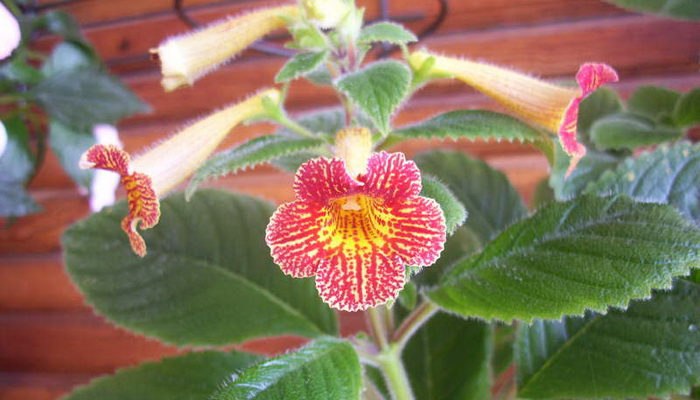
Lion-grain. It has medium-sized flowers. They are yellow in color with a thick reddish pattern. The leaves are velvety, green in color, with a lot of white villi.

Snow white. Characterization can begin with flowers, which, due to their color, gave such a name to this species.
In some cases, the bells may take on a slightly yellowish tint, but in most cases they are snow-white. Shoots and leaves are rough, distinguished by a reddish tint. The foliage is jagged at the ends.
This plant is seasonal. For achimenes, growing conditions are very important, not only "health" depends on this, but also the number of flowers that he will delight you with.
Home care for achimenes. Briefly
The tropical plant achimenes at home can be grown by a beginner, having familiarized himself with the preferences of the flower in advance:
Temperature regime
The rest period is + 13 - 15 ° C, the rest of the time - about + 20 ° C.
Air humidity
More than 50%; you cannot spray the plant; placed on a pallet with damp pebbles.
Lighting
Bright diffused; shade on windows facing south; on the windows on the north side, it will develop slowly.
Watering
The soil must be moist; during flowering, watered every 3 days.
Priming
Self-prepared mixture of equal doses of humus, peat, sand or a ready-made substrate for Saintpaulias.
Top dressing and fertilization
Diluted liquid fertilizer: at the beginning of March - once every 1, 5 months; during active growth - 4 times a month.
Transfer
Annually.
Reproduction
Seeds, rooting cuttings, dividing the bush.
Growing features
The plant has adapted to indoor life, but it is important to observe some of the features of growing achimenes in order to create comfortable conditions for it. Ahimenez needs a period of rest and declares this, losing his above-ground part
In summer, a flower planted in a hanging container feels great outdoors (the place should be bright and protected from drafts). If you pinch the tops of the shoots several times, you can form a beautiful spherical bush.
Features of achimenes
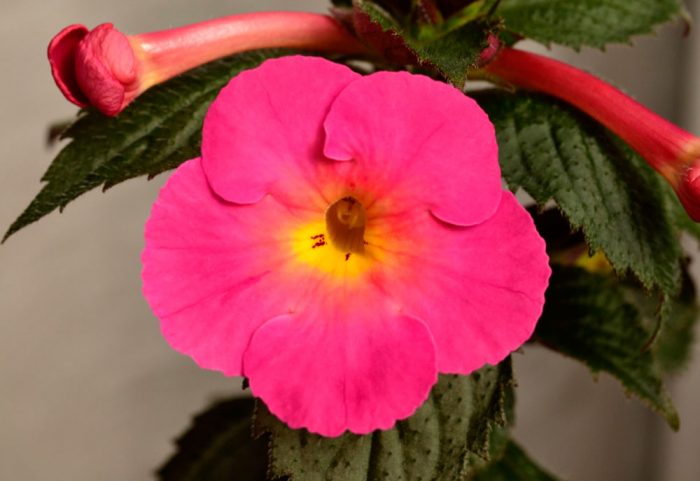
When growing achimenes at home, you need to remember that it has a dormant period. Preparation for this period at the flower begins in mid-October. In the winter months, it should be kept in a dark and cool (about 16 degrees) place, and the bush is watered very sparsely at this time.
All types of achimenes have pubescence. The stem of the bush can be branched, and the foliage is with a jagged edge and pubescence (depending on the species). After opening, the flowers wither and die very quickly, but new buds appear in their place just as rapidly. The color of the flowers is varied: pink, yellow, red, purple and other colors. They are decorated with various patterns, namely: specks, dots and stripes.
Planting and transplanting achimenes
Reproduction is possible by pieces of rhizomes, stem and leaf cuttings and rhizomes of achimenes.
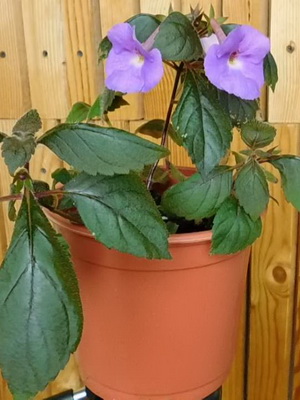
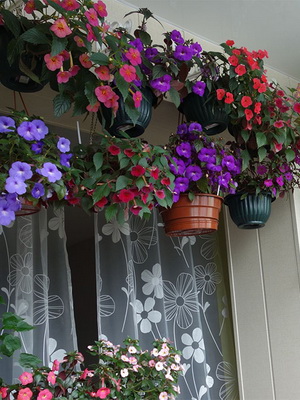
Rhizomes are planted in early spring. This is a fairly favorable period for the development of a large and strong plant. Rhizomes are formed at the root in the period before the hibernation of achimenes. If planting is in March, additional lighting will be needed. Its lack can be the reason for the appearance of weak shoots. And for rhizomes planted in late spring, the growing season will significantly increase. The general plant cycle will be knocked down, and it will take the plant several years to normalize it. Therefore, the optimal period for achimenes, the reproduction of which occurs by rhizomes, is considered to be from mid-March to early April.
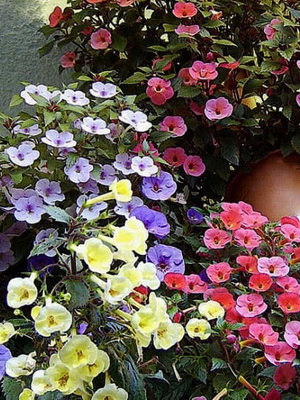
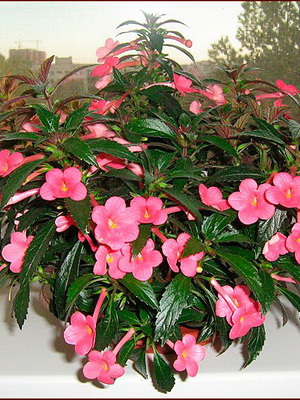
In order for the plant to take root and give healthy shoots, it is necessary to know the important aspects of how to plant achimenes with rhizomes. In order for the process to proceed more quickly, and to minimize the possibility of decay of the planting material, it is recommended to germinate it. After the first sprouts of rhizomes appear, they must be placed horizontally in the ground and sprinkled with a soil layer. The soil is then sprayed. The pot with planting material is placed in diffused light. Watering is rare enough until shoots appear, after which watering can be increased. After a month, the plant can be fed with special fertilizers to stimulate growth.
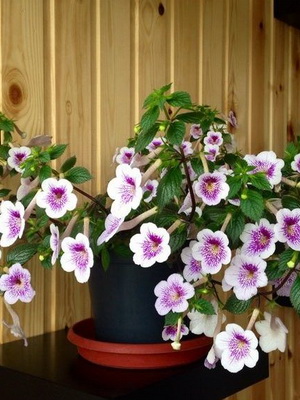
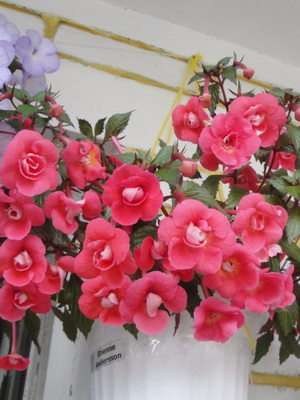
The transplant of grown achimenes is carried out when the plants have at least 6 full leaves.
Growing conditions for indoor achimenes
Among flowering plants, many species have similar “average” growing requirements. Ahimenes surpasses even the chosen unpretentious, because there is no need for him to organize a cool winter. It is enough to choose bright, intense lighting - and in an ordinary room this plant will feel quite comfortable.
Ahimenes are seasonal houseplants. For a dormant period, they completely shed their leaves, resuming growth only after a few months of suspension of the growing season. For Achimenes, the traditionally dormant period occurs in autumn and winter: the leaves die off and dry out in October, and active vegetation resumes in February.
Lighting and placement
The photophilous nature of achimenes requires very careful selection of the growing site, and the sensitivity of leaves and flowers to direct sun, which instantly leaves burns, limits placement options. Ahimenes love scattered, bright places.
It is better to place this plant on windowsills, artificial supplementary lighting does not compensate for the lack of natural light: if the plants are grown with supplementary lighting, then it should be constant, lasting from 14 to 16 hours a day. She is loved only by the species Achimenes.
For the dormant period, when the plant discards all aboveground parts, the achimenes is rearranged where it is convenient, in any dark place - until the time when it begins to grow again. At the very beginning of the growth of shoots, Achimenes is kept in partial shade or in diffused lighting. They are moved to the lighting habitual for the phase of active growth only after the shoots have risen to 6-8 cm.
Ahimenes - plants for decorating living rooms. But in living rooms, they should be placed only when their appearance fits into the style of the interior. Ahimenes can lose their appeal in the company of more austere or more lacy plants, they look good alone or with other nostalgic cultures.
Suitable for nostalgic, romantic and classic interior styles, or where color and texture are relied on. These South Americans feel great in the kitchen, where their elegance and chintz look especially festive.
When placing Achimenes, it should be borne in mind that they fully reveal their beauty only when placed slightly raised or at the same level with the eyes.
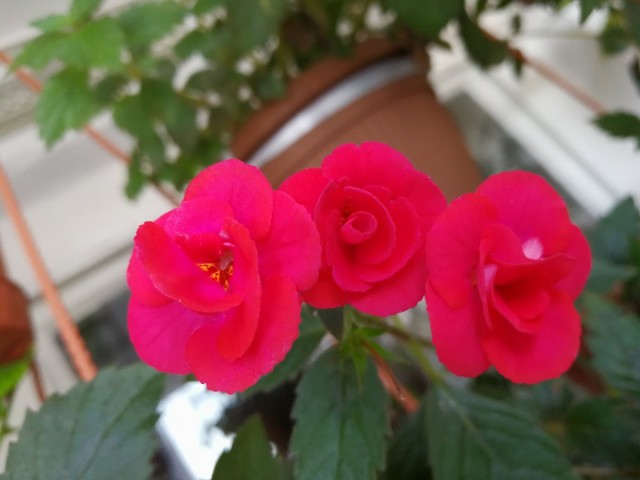 It is better to place this plant on windowsills, artificial supplementary lighting does not compensate for the lack of natural light. miculparadis
It is better to place this plant on windowsills, artificial supplementary lighting does not compensate for the lack of natural light. miculparadis
Temperature control and ventilation
Ahimenes are thermophilic plants. They seem to be made for living quarters. After all, the most comfortable temperature for them is the temperature from +18 to +25 degrees. Throughout the year, regardless of the stage of development, plants must be protected from sudden cold snaps. The cold is destructive for the Ahimenes, but the heat also negatively affects not only flowering, but also the leaves, leading to a rapid loss of decorativeness.
For Ahimenes, it is unacceptable to lower the air temperature to +16 degrees, but in summer it is better to increase the minimum allowable value to 20 degrees Celsius. During the wintering of Achimenes without soil, the optimum temperature is about 16 degrees, but even if preserved in the substrate, rhizomes winter better in slightly lower rather than hot temperatures.
Ahimenes must be protected from temperature extremes and sudden changes in conditions. This is a delicate plant that can suffer from drafts (they are especially dangerous during the flowering stage). At the same time, plants thrive on balconies and in the garden, subject to the selection of sheltered places and control of night temperatures.
Diseases and pests
Among the diseases that Achimenes most often suffer from, flower growers note such as:
- ring spot, chlorosis;
- fungal diseases;
- bacterioses.
Chlorosis and annular spotting usually develop in plants against the background of a violation of the conditions of care. Correction of the mistakes made (normalization of air temperature, humidity level, illumination) will help to get rid of the problem in this case.
Fungal diseases are often the result of waterlogging of the soil mixture. Usually, due to an excess of moisture, the roots of plants suffer. The main treatment here is the use of fungicidal preparations and the restoration of the normal moisture level of the substrate.
Bacteriosis is a group of diseases that develop as a result of damage to plants by pathogens. The main reasons for the development of bacteriosis are violations of the rules of care, contact of healthy plants with infected ones. The treatment plan in this case is based on the use of antibacterial drugs ("Gamair", "Alirin 5").
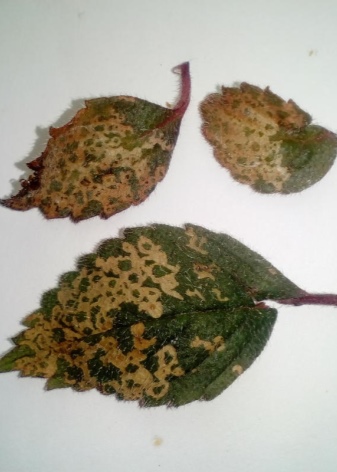
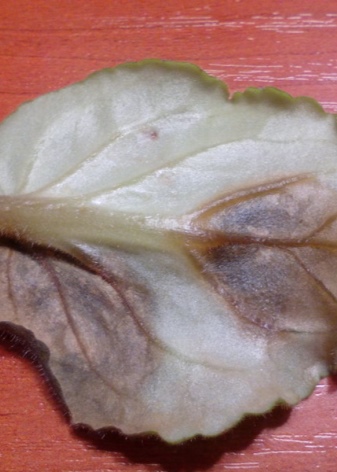
The most common pests that pose a threat to Achimenes are aphids, whiteflies, and spider mites. Plants grown on balconies, loggias or outdoors are often prey to bumblebees, which damage delicate flowers and buds.
To combat the majority of pests, such highly effective drugs as "Aktellik", "Fitoverm", "Kleschevit", "Aktara", "Confidor" are used. Preparations and their concentration are selected in accordance with the type of pest and the degree of plant damage.
During the treatment of plants from diseases or pests, the affected flowers must be isolated from a healthy green collection. During this period, the affected Achimenes need the most benign conditions of existence.
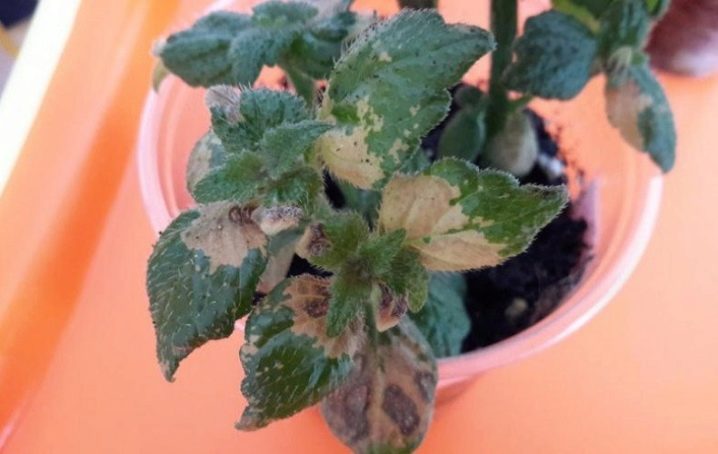
For the secrets of caring for achimenes, see the next video.
Interesting facts about the plant
It is Ahimenes who is called the "magic flower" for its beauty. This is a plant that delights the grower with long and beautiful flowering. Its genus includes, according to various sources, from 35 to 50 species of perennial tuberous and rhizome herbaceous plants growing epiphytically in the tropical forests of both hemispheres - in Central and South America (Brazil, Mexico, Guatemala, Uruguay, Colombia, Panama, Paraguay, Argentina , Jamaica).
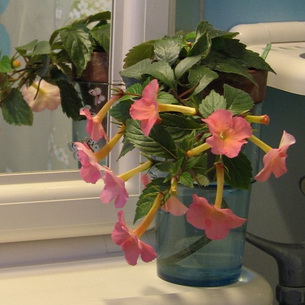
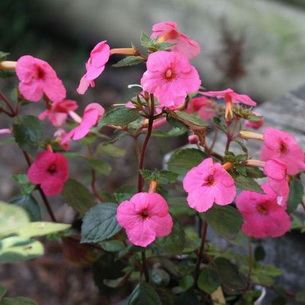
The name of the genus comes from the Greek words "a" - "not" and "heimaino" - "to endure the cold", that is, "does not hibernate", "intolerant (afraid) of the cold", as if informing us that the plant is winter dies off. Among the people there is another name for achimenes - "kruchenoplodnik", which speaks for itself.
The first mention of Achimenes dates back to the middle of the 18th century, when A. erecta was described in 1756 by Patrick Brown while studying the nature of Fr. Jamaica.
Reproduction of achimenes
This plant has several methods of reproduction. Let's look at each of them and then we will understand which ones are better to use. If desired, you can combine these methods to achieve the best result.
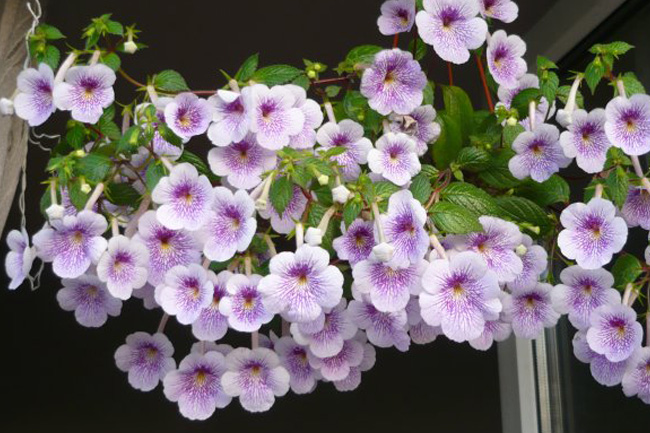
Reproduction by rhizomes
You have already seen the most popular method. This is reproduction by rhizomes. This is the safest and fastest way to get multiple plants in just one season. After all, the rhizome works on the principle of a potato tuber: you plant one or a part, and you get several, usually from 6 to 10 pieces (depending on the variety).
Moreover, this method does not require any effort from the grower - the roots are formed independently. In order for them to be more and they are of good quality, you just need to provide the plant with a container that is spacious enough in width and good care.
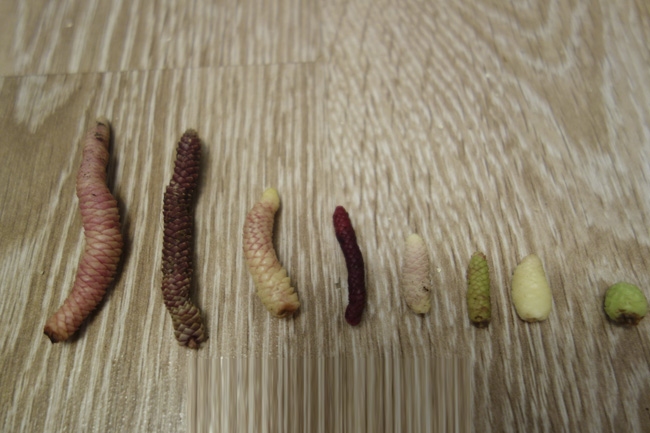
Reproduction by air rhizomes
Not all varieties of achimenes can please us with airy rhizomes, but nevertheless there are some in nature and we need to talk about them. Their function is the same as that of the basal ones.
Sometimes they form like this on the stems. You don't need to rip them off right away. We harvest only after the stem has dried out. Aerial rhizomes can be stored in bags in the same way and planted in the ground in spring. This will make a wonderful plant.
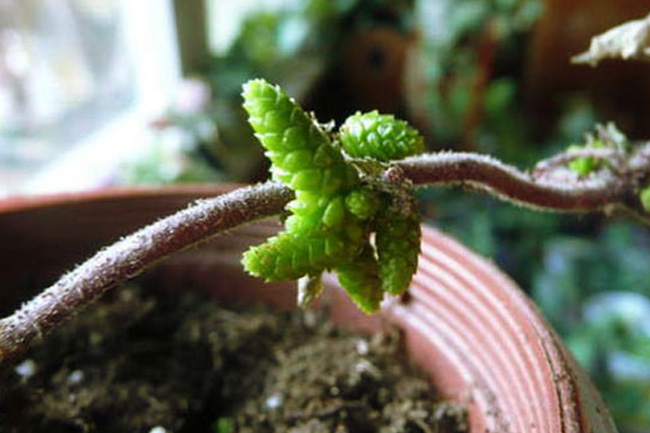
Propagation by cuttings
Achimenes is easily rooted in this way, as well as any plant with non-grinded stems. The apical stalk is selected; it can be quite small.
With a sharp razor or knife, it is cut off and placed in greenhouse soil for rooting... It also takes root well in peat tablets.
Cuttings are made before the beginning of flowering of the plant.
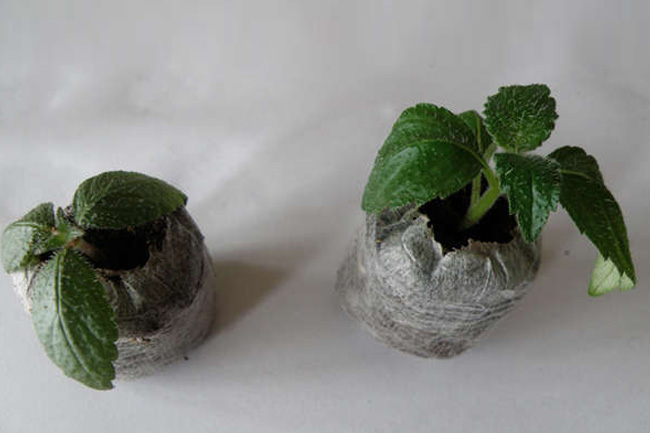
Leaf propagation
This plant can actually be propagated even by leaves. This is also a good way to get multiple plants at once.
With a sharp knife, cut off a leaf of achimenes with a shank and place it in the ground and in a greenhouse, like a violet leaf. In a couple of weeks, it will have its first roots. When propagating achimenes by cuttings and leaves, it is necessary to maintain a sufficient level of soil moisture.
However, when planting leaves in spring, they will bloom only for the next season.
Their first summer will be spent on the formation of root systems and rhizomes. In winter, it will be prudent not to disturb the rooted leaves or dig up their rhizomes, leave them to winter in pots.
In the spring, when the achimenes hatch from the leaf, he will need to be transferred to a larger pot. And this summer he will already delight you with flowering.
